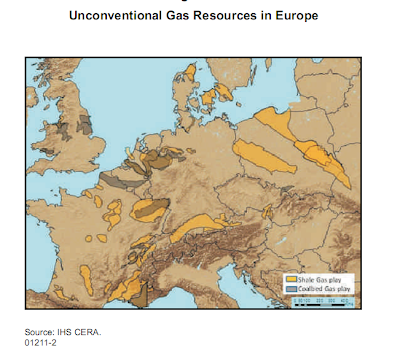The effects of Japanese Tsunami and Nuclear Problem
Demand Side:
1. “At least five Japanese-owned refineris with total capacity 1.5 million b/d (1/3rd of Japanese capacity is shutdown)” (Ref:1)
2. “Some 9.7 Gw of nuclear power generation—30% of Japan’s total nuclear power capacity and 7% of Japan’s total power generation capacity—were shut down” (Ref:1)
3. 9.7 GW= 9.7*8.000=77.6 TWh of nuclear energy should be substituted by natural gas and coal. Assuming 50% of this lost capacity to be substituted by LNG = 38.8 TWh. That much of electricity can be obtained by at least 7.09 bcm of LNG (Sources claim as much as 10 bcm)
4. Estimated additional demand of coal can be 5m-30m tonnes (Ref:2)
International Markets:
1. Natural gas prices : up 7.7% (Ref:2)
2. Oil : down 1.94% (Ref:2)
3. Coal: By April 1, previous record of $125/ton (Australia) may be topped. (Ref:2)
European Nuclear Firms:
- European energy firms like EON(-8.52%) , RWE (-%7.95), EDF (-11%) (Ref:3)
- Also check mining firms from here : Ref:3
- "German Chancellor Angela Merkel said on Tuesday that all seven of the country’s nuclear power plants which began operation before 1980 would be provisionally shut down." (Ref:5)
Finance:
- There is probably more uninsured damage in the destruction of North East Japan than in any other event in history – and uninsured damage falls sharply on banks. (Ref:4)
Ref:1 http://www.cges.co.uk/media/articles/2011/03/15/japan-quake-scrambles-market
Ref:2 http://blogs.ft.com/energy-source/2011/03/14/energy-market-disruption-in-figures/
Ref:3 http://ftalphaville.ft.com/blog/2011/03/15/514546/euro-nuclear-paralysed-and-paralysing/?utm_source=twitterfeed&utm_medium=twitter
Ref:4 http://ftalphaville.ft.com/blog/2011/03/14/513446/super-catastrophe-and-super-banking-risk
Ref:5 http://blogs.ft.com/energy-source/2011/03/15/germany-shuts-down-all-pre-1980-nuclear-plants/?utm_source=twitterfeed&utm_medium=twitter
Read more...

 Also, 2010 gas figures can be found:
Also, 2010 gas figures can be found:


